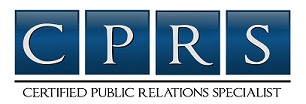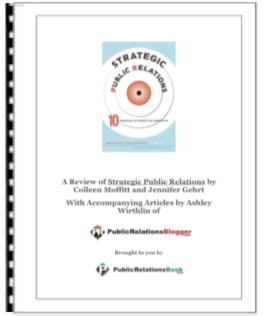________________________________________________________________________
Communications management is the systematic planning, implementing, monitoring, and revision of all the channels of communication within an organization, and between organizations; it also includes the organization and dissemination of new communication directives connected with an organization, network, or communications technology. Aspects of communications management include developing corporate communication strategies, designing internal and external communications directives, and managing the flow of information, including online communication. New technology forces constant innovation on the part of communications managers.
Eventually, each employee will receive a long e-mail, containing many or all of the above-mentioned summaries, from every level of management; reading the full result is rarely a requirement. Curious or ambitious employees are considered more likely to read the result; task-centered employees, however, are not.
Examples of the weekly reporting method
At Printronix (NASDAQ PTNX), a $100m manufacturing organization with five levels of management, this was applied starting in 1990. Within a week, the perennial grumbles about "bad communication" ceased. By 1994 the organization had reduced total floorspace by 40% (eventually 75%), had "found" $100m of cash, reduced backlog from 3 months to 3.5 weeks, reduced product development time (for computer printers, a complex product) from three years to six months, and doubled product service life (greatly reducing the total cost of ownership of their product). This was achieved by a series of employee-initiated, management-led activities: adoption of just-in-time manufacturing, statistical process control, corrections of product weaknesses, and a cross-product "printer architecture" permitting development of "design modules" that could be mixed and matched for niche markets.
All of the programs arose via the reporting structure, making them visible to upper management, who were then free to support proposals they felt made sense.
Another cross-hierarchical system with similar traits arose at Warburg's Bank. According to Jacques Attali's biography, Warburg used a sheet of one-to-four-line summaries of each possible new loan, on a few sheets that were copied through the entire bank each day. It spanned the entire hierarchy, and anyone with comments was asked to bring them. Warburgs grew from 16,000 pounds, to 4 billion pounds under management in less than forty years.
Article Source.
What is Communications Management? | Weekly Reporting Method
________________________________________
Communications management is the systematic planning, implementing, monitoring, and revision of all the channels of communication within an organization, and between organizations; it also includes the organization and dissemination of new communication directives connected with an organization, network, or communications technology. Aspects of communications management include developing corporate communication strategies, designing internal and external communications directives, and managing the flow of information, including online communication. New technology forces constant innovation on the part of communications managers.The weekly reporting method
One simple and popular communications method is called the weekly reporting method: every employee composes an e-mail report, once a week, including information on their activities in the preceding week, their plans for the following week, and any other information deemed relevant to the larger group, bearing in mind length considerations. Reports are sent to managers, who summarize and report to their own managers, eventually leading to an overall summary led by the CEO, which is then sent to the board of directors. The CEO then sends the board's summary back down the ladder, where each manager can append an additional summary or note before referring it to their employees.
One simple and popular communications method is called the weekly reporting method: every employee composes an e-mail report, once a week, including information on their activities in the preceding week, their plans for the following week, and any other information deemed relevant to the larger group, bearing in mind length considerations. Reports are sent to managers, who summarize and report to their own managers, eventually leading to an overall summary led by the CEO, which is then sent to the board of directors. The CEO then sends the board's summary back down the ladder, where each manager can append an additional summary or note before referring it to their employees.
Eventually, each employee will receive a long e-mail, containing many or all of the above-mentioned summaries, from every level of management; reading the full result is rarely a requirement. Curious or ambitious employees are considered more likely to read the result; task-centered employees, however, are not.
Examples of the weekly reporting method
At Printronix (NASDAQ PTNX), a $100m manufacturing organization with five levels of management, this was applied starting in 1990. Within a week, the perennial grumbles about "bad communication" ceased. By 1994 the organization had reduced total floorspace by 40% (eventually 75%), had "found" $100m of cash, reduced backlog from 3 months to 3.5 weeks, reduced product development time (for computer printers, a complex product) from three years to six months, and doubled product service life (greatly reducing the total cost of ownership of their product). This was achieved by a series of employee-initiated, management-led activities: adoption of just-in-time manufacturing, statistical process control, corrections of product weaknesses, and a cross-product "printer architecture" permitting development of "design modules" that could be mixed and matched for niche markets.
All of the programs arose via the reporting structure, making them visible to upper management, who were then free to support proposals they felt made sense.
Another cross-hierarchical system with similar traits arose at Warburg's Bank. According to Jacques Attali's biography, Warburg used a sheet of one-to-four-line summaries of each possible new loan, on a few sheets that were copied through the entire bank each day. It spanned the entire hierarchy, and anyone with comments was asked to bring them. Warburgs grew from 16,000 pounds, to 4 billion pounds under management in less than forty years.
Subscribe to:
Post Comments (Atom)






Comments (0)
Post a Comment